|
2/14/2023 I Don’t Belong Here: Your Friendly Neighborhood ADHD-er Talks Suicidal Ideation and SurvivalRead NowTrigger warning: suicide attempt. Belonging is such an innate human desire that we often forget what a large impact it has on our overall mental health and wellbeing. Newborns need acceptance from their parents/caregivers, children and young adults seek acceptance from peer groups, and adults seek acceptance through partnerships, both romantic and platonic, because it makes us feel connected and fulfilled, bringing purpose to our time on earth. So, what happens when belonging seems to belong to everyone but you? WITH UNDIAGNOSED ADHD AND SUSPECTED AUTISM, I NEVER FELT I BELONGED ANYWHEREWith almost 8 billion people in the world, it seems like it would not be that hard for everyone to find a sense of belonging somewhere with relative ease. I can tell you that was not the case for me, and if you are neurodiverse maybe it was not the case for you either. I spent the first 33 years of my life with undiagnosed ADHD and suspected autism. As far back as I can remember I have been “weird”. Other than with my twin sister – who is my forever best friend and the one human on earth who understands and accepts me completely – I have never felt like I belonged anywhere. Always a bit of an outsider, I never held onto friends for very long and have never been in a relationship for longer than 2 and 1/2 years. To say that I struggled in academic, social, and professional settings for over three decades of existence would be a gross understatement. My neurodiversity dictates how I perceive and interact with the world around me but for most of my life I had no idea I was neurodiverse so most of my energy was spent on trying to force myself to function like my neurotypical peers. After all, that’s the ideal, right? Societal, social, and professional norms are built on the premise that we all “should” think, behave, and communicate in a similar (i.e., neurotypical) fashion. NO ONE UNDERSTOOD ME. NOT EVEN ME.When you fall outside of that very small and limiting box of expectations, your reality may be very lonely. I could never quite grasp why it seemed so easy for others to make and keep friends, to move in and out of relationships, to know just what to say and how to act so that people wanted to be around you. I tried so hard to fake it and be like everyone else, but the real me always came out and it always meant losing friends and partners because they didn’t understand me. I didn’t even understand me. I knew there was something different and I spent a very long time trying to find out what that was. For as long as I can remember, I have been searching for answers about why I was, well, me. I have been in and out of therapy since I was 8 years old, sitting in front of licensed clinical therapists, psychologists, psychiatrists, primary care physicians, teachers, and really anyone who would listen, trying to find myself. Because I knew I was not like everyone else but could not figure out how to “fix” myself, I suffered from profound anxiety and depression with suicidal ideation developing in my teenage years. I was misdiagnosed multiple times and put on so many medications for anxiety and depression with nothing really working, which only added to my despair. UNDULATING BETWEEN F**K THE WORLD ATTITUDE AND CHILD-LIKE DESPERATION FOR ACCEPTANCE AND LOVEThe root of my challenges came from my neurodiversity and because that had not been identified, nothing improved. As a result, I undulated between hyper independence with a f**k the world attitude and child-like desperation for acceptance and love. Without an understanding of the why behind my feelings, perceptions, and behaviors, I spent my youth adrift in dangerous waters. In an effort to cope with my very loud brain and my incredibly deep emotions, I turned to alcohol, tobacco, occasional marijuana, and toxic relationships. Not only did these things give me a pseudo escape from a reality where I did not belong and did not know why, it gave me an excuse to lean into the rough edges of myself. After all: “Everyone gets rowdy when they drink so it won’t seem weird that I’m loud and hyper and over the top.” “Smoking will show everyone that I am damaged and tough. Besides, what do I care if it hurts me?” “Weed helps my brain take a break from the never-ending stream of consciousness pulling me in 10 different directions at once.” “Love is supposed to be chaotic. Screaming at each other and getting into fights is a show of passion. I have to process my strong emotions somehow and toxic relationships give me an outlet to do that with the false sense of security that comes with being with someone, even if they’re wrong for me.” MY DOWNWARD SPIRAL DOWN INTO DARKNESS AND SUICIDE ATTEMPTSShocking no one, these tactics only furthered my downward spiral. The first time I tried to take my life I was 19 years old, just a few weeks shy of finishing my freshman year in college. I had gone through a bad breakup from my first serious relationship. The breakup was a result of a mistake I made, coupled with my unhealthy coping mechanisms and general lack of knowledge about my brain wiring, I descended into a very dark place. Research shows us that those with ADHD are more likely to use alcohol, tobacco, and illicit substances and have a greater risk of developing a substance use disorder than those without ADHD. Never in my life had this statistic fit me more accurately than during this time. I was drinking to excess back then and engaging in dangerous habits like reckless driving and other thrill-seeking activities. None of these things made me feel better and no matter how hard I tried to fit in and find that sense of belonging, I still felt deeply alone. One night sitting in my dorm room, it all became too much and I made the decision to end my life. I texted all of my “friends” to say I loved them and took an entire bottle of pills with a liter of vodka. One of the people I texted was suspicious of my wording in the message and found me on the floor when she came to my room to check up on me. She called for help, and I was taken to the ER, and given charcoal to neutralize and expel the poison in my stomach. I spent a night in the telemetry unit to make sure my heart was not damaged, evaluated by a psychiatrist, and sent home with my mom and sister, who had driven almost 6 hours to get to me when they received the news. At first I felt like a failure and the feeling of “I don’t belong here” and wanting to end all the pain did not recede immediately. Most days it was a fight to find a reason to stay, but I kept fighting. As time passed, the reasons to stay became more and more powerful. The journey hasn’t been easy, but it has absolutely been worth it. INTERPLAY BETWEEN MY EXPERIENCES AND MY NEURODIVERSE MINDI did not know it at the time, but my experiences are directly reflective of the neurodiverse mind. I have an extremely hyperactive brain, so I talk a lot. I also have a tendency to be impulsive, and constantly struggle with executive functioning like task initiation and working memory challenges. I always seek out dopamine and get bored easily when there is not enough novelty or excitement. I am plagued by rejection sensitivity dysphoria and ruminating negative thoughts, and have difficulty maintaining healthy relationships with romantic partners, finances, food, and physical activity. Despite fitting the picture of a combined-type ADHDer perfectly, I did not receive an accurate diagnosis until I sought one out myself after my young nephew was diagnosed. At that time, I also dove into researching neurodiversity and was blown away by how much I related to the experiences of those with ADHD and autism. I found a local professional who diagnoses adults and made an appointment with her for assessment and on-going care management. CORRECT DIAGNOSIS ENABLES ME TO LOVE ALL THE PARTS OF ME I TRIED TO EXTINGUISH FOR SO LONGThe diagnosis changed my life because I was finally able to put a name and a frame around my experiences. It helped me to stop feeling broken and start feeling unique in a powerful and profound way. It has allowed me to find answers and explanations for so many of the things that made me hate myself. I can now lean into my strengths and find ways to love all of the parts of me that I have tried to hide or extinguish for so long. Having undiagnosed ADHD and suspected autism meant that I walked through so much of my life trying to force myself to be anyone other than me. Wearing a mask every day and feeling like the real me would never be good enough was depressing and defeating. The lack of belonging led me to a point where I attempted to take my own life. Thankfully, I was not successful. “Failing” at that has allowed me to flourish in my purpose of creating a sense of belonging for so many others who have spent their lives feeling alone. For me, life changed when I stopped trying to be everyone else and figured out how to work towards being the best version of me. Next time you feel like you don’t belong here, make sure you are seeking belonging in your “here” and not someone else’s. GUEST AuthorOur heartfelt gratitude to our guest author this week, Gwendolyn Janssen MHA, MSN, RN, for courageously sharing her story with such vulnerability and bravery. In the words of California's former Surgeon General, Devika Bhushan, who thrives with a bipolar diagnosis, "stigma festers in the darkness and scatters in the light." By sharing our stories, we humanize our struggles, removing bricks from the wall of stigma and letting light shine through. Those struggling step out from the shame and silence and reach out for help; and, are empowered to come into their own surrounded by their inner lights, self worth and self love. We all deserve to be seen, heard and valued. Thank you for this reminder Gwen. You will always belong. Shine on mighty warrior, shine on.
6 Comments
Despite the abundance of dating opportunities, finding love has never been more challenging. We’ve come so far with technology and cultural progress, yet we still struggle with dating burnout. Finding love should be simple now, but it’s become a complex and emotionally draining journey. We strive for security, independence, and growth in our relationships, yet the search for love seems to bring on feelings of anxiety, insecurity, and heartache. We want to protect ourselves, but it’s becoming harder. Dating World ChangeD But Our Humanity Remains the SameThe feelings of unworthiness and shame individuals with mental health challenges experience when dating are often overlooked. Asking for an emotional connection right away can feel like an imposition, and waiting too long can leave us with doubts. Despite the turmoil, we still have to play the game and losing sucks. We hide our feelings, put on a facade, and are afraid to show our vulnerabilities. We seek validation and send panicked screenshots to our friends for the next best reply. We’re constantly second-guessing and navigating with care, yet we dare. But sometimes, in the quest for love, we shove our emotions to the back of our minds, choosing solitude over relationships and self-discovery over love, believing that we must love ourselves before we can love others. Navigating My Highs and Lows In Pursuit of LoveI have struggled with my moods for a long time, especially in what some would say are my “hot years.” I’ve woken up on many days with the vow of not pursuing relationships altogether, feeling unworthy and overwhelmed. On other days, I would feel ambivalent, deleting dating apps and re-downloading them frequently, exhausting my very little energy. I would be hot and cold, asking for space one moment and as little space as possible the next. If I really liked someone, I’d freak out. What if they could see through me? Sometimes, I would reveal too much too soon, and I always wondered, why was that a problem? I have searched for stories like mine in books, TV shows, movies, and other people, hoping to find a way to make it to the other side. But to avoid heartache, save energy, and keep other aspects of my life stable, I have denied myself the opportunity to date on several occasions. I’ve also been in failing relationships where the guys would gaslight me, twisting my words and actions to make me question my own reality. And when I dared to speak up, they would blame it on my bipolar disorder, making me feel like the villain. They would use my mental health as a tool to manipulate and control me, making me doubt myself and my own experiences. It was a constant battle, trying to navigate the confusion and uncertainty they created. I felt like I couldn’t trust my own mind and that I was constantly walking on eggshells, trying to avoid their wrath. My condition felt like a burden, and I thought I must be wrong after all. It was cruel and left me feeling isolated and alone. “Take Me As I Am, Whoever I Am”I had to learn that my bipolar disorder is not something to be exploited or used against me and to trust my own mind. I had to learn to dig deeper into my intuition and virtues, always align my actions to my moral compass and walk away when needed. This guided me in all types of connections I made over these years. I have slowly started speaking up about my mental health. Among friends, coworkers, and at open mics because pretending that I was not crumbling on the inside was getting exhausting. A friend once suggested the third episode of the show “Modern Love,” in which Anne Hathaway plays a character who navigates the dating world while struggling with bipolar disorder and balancing her professional life. That hit me hard. I must have cried throughout the episode. The title “Take Me As I Am, Whoever I Am” is not just for the world but also something I have had to ask myself to do. I feel my feelings very deeply. Lately I’ve had to dig a lot deeper to uncover what I am running away from, discover what keeps me from moving forward, and how I can avoid this back-and-forth in my decisions and actions. These promises of self-protection would keep me isolated and spare others from hurt, but they also burnt bridges and left some perplexed. What followed eventually was regret. With goals achieved, self-care maxed out, and passions no longer filling the void, this dust would settle, leaving me alone with my desperation staring back at me. But I do often catch a break which gives me a chance to breathe as a human — a messy, vulnerable, magnificent human who is very well capable of love. LET LOVE FLOW BY EMBRACING YOUR VULNERABILITIES AND INSECURITIES AND PASS YOUR LOVE ON TO OUR CHILDRENThis is not just a story about seeking love in romantic relationships but about preserving the very essence of it. A story about love that:
As I delved deeper into my emotions, I discovered a hidden treasure — a superpower I never knew existed. Embracing the ebbs and flows of my moods made me incredibly attuned to the feelings of others, and empathy began to flow naturally from me. I recall a moment when I was feeling particularly low and witnessed a woman crying on the subway, ignored by all around her. Without a second thought, I followed her off the train and gave her a comforting long hug until she said she felt better, and was ready to go on with her day. It was then that I realized the true power of empathy and how it can transform the lives of those around us as well as ourselves. It makes us brave to show up. It’s also about learning to receive empathy as well. My friends who understand my condition show me endless grace and compassion when I feel unworthy and when my thoughts become stuck in a cycle. Let’s pass this love on and assure children who’ve endured the bitter pain of growing up in an emotionally abusive environment, where love was a distant dream, that it was never their fault. They have every right to feel the hurt and the pain. Indeed, allowing themselves to do so is the truest form of love. There are those among us – coworkers, friends, and even strangers – who will listen without judgment and hold you tight as you cry. That is love. And, when your friends are too burdened to reach out, you must reach out to them with tenacity and openness and, when they finally open up, that is love. We all seek love in our romantic relationships, but we can’t limit it to that. It flows freely. Love is everywhere, in every person we come across, and in every moment. We have all felt denied of the love we so deeply crave, but let that be the driving force to create more of it. We are love; we are it. Do not take my word for it. Go out into nature, sit in a garden and truly relax. Take in every detail around you, and you will see it. You will feel it. DO NOT LET YOUR MENTAL HEALTH LIMIT YOUR ABILITY TO LOVETo those battling their mental health, please hear this: your capacity for love is not limited by your struggles. It is often through the darkest of days that we learn to love with the deepest of sincerity. You have felt the pain of life’s harsh realities, and in that pain, you have found the strength to love with a ferocity that others can only dream of. You understand the importance of compassion and empathy: of truly seeing and understanding another person. You have been to the depths of despair and have emerged with a heart full of love and the courage to give it to the world. You are capable of loving in ways that others can not imagine; your love is pure. It is real and it is what the world needs. You are the light in the darkness, the hope in the despair, and the love in pain. Believe in yourself, in your capacity to love, and let that love be the beacon that guides you through life’s journey. I always knew I was different. A little too sensitive, a little too anxious, a little too much. As a child, I struggled with social anxiety and an obsessive need to please others. And, although I appeared to be a very happy child, something was starting to change in me. As a teenager I began to struggle with suicidal thoughts but was too afraid to tell anyone. I had been placed in therapy, but I was too scared to tell my therapist just how sad I was for fear of what would happen to me. my facade crumbles and my mental health along with itI once heard Jim Carey say that “depression” means “deep rest” and that a depressed mind is your body’s way of saying, “I need a break, I don’t want to play this character anymore.” That is exactly how I felt. I was physically and emotionally exhausted from trying to be happy all the time, trying to please others, and wearing a mask so that no one could see the real me and how much I was hurting. By the time I reached college, the façade that I had been holding up for so long came crumbling down and I had a full mental breakdown. I was forced to drop out of school and was eventually placed into McLean hospital as my behaviors became increasingly dangerous. I felt like I had failed everyone in my life and had failed myself. I no longer saw a bright future. I didn’t care anymore about anything, especially myself. Borderline personality disorder, anxiety, and depression diagnoses help me make sense of myself and my lifeI was hospitalized at 19 years of age and diagnosed with borderline personality disorder, anxiety and depression. Once I came to understand my diagnoses, the distorted way that I thought started to all make sense. I finally understood why I was such a people pleaser, why I was so terrified of being abandoned by my loved ones, why I was so afraid of anger, and why I had reached my breaking point. I started to realize that these illnesses had dictated so much of my thought processes that I didn’t even really know who I was. I lived in such paralyzing fear for most of my life, afraid to upset people and afraid to fail. I was exhausted. BEGINNING REAL WORK OF UNDERSTANDING WHERE MY ILLNESSES END AND I BEGinBut now the real work has begun: learning to understand where the illnesses end and where Dina begins. After spending ten years in and out of hospitals and rehab facilities, I was able to slowly reintegrate into mainstream society. I was able to go back to community college and then finish my Bachelor’s degree at Boston College while I worked a full-time job. The more I learned about myself, the more I began to realize just how smart I was, how kind I was, and what a great laugh I had. FULLY EMBRACING MY LIFE’S DREAMS, I Go for itWith a lot of grit and hard work, I was able to finally pursue the career path that I always envisioned for myself, landing internships and eventually a full time position working in television. I have achieved things that many thought were not possible for me and, even now, I need to constantly remind myself to be grateful for that. However, as we age and mature sometimes our dreams change and now, I am beginning to envision a whole new career path as a mental health empowerment keynote speaker. And once again, I plan to achieve that because I know that I can. my journey to recovery is a medal of honorI used to want to sweep the fact that I had endured a life-altering mental illness under the rug and just move on. I was ashamed and embarrassed of my past but now, I realize that I should NOT be ashamed of this. Rather, I should wear my journey to recovery like a medal of honor. I should be proud, and I should remind myself of that every day. A mental illness that alters your life never truly goes away but rather it lies dormant and reappears when life gets tough. I often try to control all aspects of my life because I have somehow convinced myself that if I can control life then it can’t throw me off the tracks. It can’t derail me and make me sick again. But that is not how life works. my light is A Beacon Reminding me We ARE All Perfectly ImperfectI am still learning to let go of the reins every once in a while, embracing the knowledge that even if life breaks me, I won’t stay broken forever. I am still actively in therapy and on a daily medication regimen. I fully support this because it allows me to lead a “normal” life. I still have issues that I struggle with daily, and I continue to work on myself every single day. Do I wish I was not an anxious person? Yes, of course! Do I wish I had not lost ten years of my life? Absolutely! But am I proud of the person I became? Undoubtedly! please heed my advice to youI once heard a quote, “when you go into the storm, you don’t come out the same person … you aren’t supposed to.” Mental illness is a storm but, like the quote says, you can come out of a storm, you just aren’t the same person who went into it. You are stronger and more resilient. My advice to you is this: don’t allow your mental illness to dictate what you are capable of. Only you can determine that. And remember, you are not flawed. You are not unlovable. You are not unworthy. You are perfectly imperfect. Go chase your dreams. You got this!
Why are FAMILIES and mental health advocates of loved ones WITH SERIOUS BRAIN DISORDERS fighting so hard FOR RECLASSIFICATION?Recently, the term Serious Brain Disorder (SBD) has been circulating in my Facebook mental health advocacy groups more and more. At first, it seemed as if these circles of advocates wanted the insurance companies to code Serious Mental Illnesses (SMIs) differently so they would issue better compensation to psychiatric providers and so patients could have easier access to treatment. In that case, I thought, why not address it with how the insurance companies are required to code them? But it starts elsewhere, beyond the insurance companies. As I explored and researched the issue, it became clear that taking Serious Mental Illnesses seriously must include labeling it transparently and as unbiased as possible. Here are several reasons why families and mental health advocates of loved ones with Serious Mental Illness—especially schizophrenia and the like—are fighting with all their hearts, souls, and minds to have it recognized as what it truly is: Serious Brain Disorder. First, What is SMI?The Diagnostic and Statistical Manual of Mental Illnesses defines Serious Mental Illness as “a small subset of the 300 mental illnesses that are in DSM.” “According to the National Institute of Mental Health, serious mental illness is relatively rare, affecting only 5% of the population over 18. Serious mental illness includes schizophrenia; the subset of major depression called ‘severe, major depression’; the subset of bipolar disorder classified as ‘severe’ and a few other disorders.”(4) One of the sources I interviewed pointed out that the general public doesn’t know what Serious Mental Illness is so reclassification would clarify the concept. On the other hand, I pointed out, wouldn’t that muddy the water? Not if they are educated. SBD EffortsAn organization advocating for the reclassification of SMI to SBD is the National Shattering Silence Coalition (NSSC). The nonprofit has eight points of unity members align under, and the first is their primary concern:
The Two Were Once OneThe two disciplines—neurology and psychiatry—are not as different as one may think. In fact, at one point they were one discipline. Historically, psychiatry and psychology were a part of neuropsychiatry until “psychiatrists enthusiastically embraced the key that they were given to the human psyche, and this new ‘mentalistic’ approach consequently detached psychiatry from neurology,” this article in neuro.psychiatryonline.org explains. “It may be further speculated that neurologists, too, accepted this dichotomy and were relieved to leave the treatment of mental illness to others.”(1) A Broken System Slighted and MisunderstoodMental health and the demand for psychotherapy and psychiatry are coming into the forefront on matters related to COVID-19’s mental toll on peoples’ psyches. However, advocates for SBD have been begging for practical solutions to a broken mental healthcare system long before the present worldwide crisis. Jeanne Allen Gore, SBD advocate, co-founder, and Coordinator of NSSC, argues that mental healthcare as an industry has been misconstrued, underfunded, and at a large disadvantage from neurology and pathology sciences and healthcare systems. Gore points out, “If you do the math, there is a glaring mismatch: $36.55 spent on adults with SBD compared to $478 on those with Alzheimer’s, which is 13 times, or 1,327% more per person.” According to Gore, other brain disorders like Alzheimer’s and autism have been inclined to more empathetic responses from the public. Since Alzheimer’s and autism have been funded and fought for their position at the table of medical sciences to be recognized as structural, biological, and medical brain disorders, it appears they garner more compassionate attitudes and legitimized views from society. The Science Has Been ThereIn the article at neuro.psychiatryonline.org, authors Shahar Arzy, M.D., Ph.D., and Shlomo Danziger, M.A. explain, “With our current scientific understanding of the cerebral basis of psychiatric disorders, the era of the computational, data, and genomic revolutions once again merges the domains of neurology and psychiatry for a neuroscientific-based diagnosis, monitoring, and treatment of neuropsychiatric diseases.”(1) In regards to SBDs like schizophrenia and symptoms like psychosis, science and technology are making ways to merge the disciplines of neurology and psychiatry. Especially in disorders like schizophrenia, severe depression, and severe bipolar disorder where psychosis is a symptom, these are brain-based and medical in nature. “More recent and dramatic evidence has come largely through functional magnetic resonance imaging and positron emission tomography,” per Mary G Baker, President, European Parkinson’s Disease Association as stated in Baker, Kale, and Menken.(2) Mary Palafox, RN, Chair of the Schizophrenia and Psychosis Action Alliance (S&PAA) states, “It’s not a debate whether schizophrenia is a neurological illness. Science has already determined schizophrenia to be a neuro-developmental disorder.” You can visit their website over the next few months and follow how S&PAA is actively changing the treatment paradigm for those with schizophrenia spectrum disorders. A Legal Loophole and Political ProblemsYet in practical solutions to psychosis in schizophrenia, psychiatrists cannot treat psychosis if the patient is not voluntarily admitted or concedes to treatment by their own will. In any other discipline, in a state of psychosis as a result of a medical condition, the doctors must treat, and their hands aren’t tied by laws. The danger of the legalities with SMIs or SBDs is what happens to many with SBD like schizophrenia when untreated, known as “dying with their rights on.” Jeanne Allen Gore writes: “People with neurological illnesses, under medical standards of care, have access to resources and supportive care that those diagnosed with a ‘mental illness’ do not have access to. Their doctor makes the decisions about what level of care is needed and when it’s needed, not a judge. For decades, the decision to admit a patient with SBD for medical care has been made based on laws requiring dangerousness and the availability of hospital beds, or should I say, lack thereof, rather than medical necessity.” She emphasizes, “This unconscionably cruel system has resulted in horrific abuses, neglect, and suffering. Our loved ones end up homeless, incarcerated, or dead far too soon. Science has proven these are no-fault, neurological brain disorders. Clinicians, doctors, and scientists know this. They are not a failure to control one’s behavior, a character weakness, or the result of a traumatic childhood.” Behavioral and mental health sciences have their value in psychosocial rehabilitation for substance use. Psychotherapy continues to be a respected and evidence-based approach for those with cognitive damage and disorders from substance use, trauma, and brain injury. The value of psychology and psychiatry cannot be ignored and compartmentalized, and there is a place for all these studies to effectively work together to help patients and those who care for them. It won’t be achieved as effectively and as successfully if true severe, serious mental illness, is not taken seriously in and of itself. To do that, action must be taken to move psychiatry and neurology back into a working relationship. The advances in science are here and there is enough evidence to show the validity of a medical cause of schizophrenia and these types of severe illnesses. The Bottom LineThe battle to have SMI recognized as SBDs continues, in order to be funded for more research to find better treatments and more physical tests connecting the symptomology of psychosis to the etiology (causes) of biological and physical structures. When the standard world health organizations take serious brain disorders seriously, then doors can open to more changes and better care. Then insurance payers can code them “medical” and doctors in hospitals and ERs will have to treat them as any other medical condition: with integrity, compassion, and ethics. Advocates for SBDs are pleading for this shift in terminology and semantics because of the severity of the illnesses and the brokenness of the system that currently treats those with them. With language that articulates that these disorders are brain-based and physical, reclassifying SMI to be recognized through medical standards can lead to better care and more practical solutions for individuals who suffer from it. This will level the playing field for equity in research and treatment funding, awareness campaigns, and give access to care and programs like #HousingThatHeals, just as Alzheimer’s and autism have achieved. With every discovery we make to understand mental illness, we will all inevitably have to face the reality that “mental” is medical. Reclassifying Serious Mental Illnesses as Serious Brain Disorders is the gateway to the broader acceptance of that reality. references
addendum from Kerry Martin, CEo & FounderAn added benefit of reclassification is removing the word "mental" from our narrative which would erode stigma in our society — in our workplaces, schools, social media, etc — saving lives and lessening suffering for our children, youth and adults struggling with their mental health. Stigma is trapping far too many behind its wall in silence and in shame, keeping those in need from reaching out for help. And, for those who believe we have made great strides in eradicating stigma, I would ask you, why hasn't our own Congress repealed a blatantly discriminatory law that has been on the books for almost 60 years, the IMD Exclusion, that has resulted in marginalizing our most vulnerable citizens, incarcerating them in our jails and prisons, walking over them on our cold streets, and pushing them into early graves?
1/3/2023 MYTHS Versus REALITIES OF Assisted Outpatient Treatment (AOT) FROM LENS OF mobile emergency psychiatric clinician ON FRONT LINESRead NowAssisted Outpatient Treatment (AOT) is a program under court order that motivates adults with serious mental illnesses who’ve had difficulty in adhering to voluntary treatment to engage in treatment. Civil courts and mental health agencies work together in AOT to reduce the frequency of inpatient hospitalizations and incarcerations. AOT encourages treatment teams to keep the recipients in treatment. An AOT request can be initiated as part of discharge planning on an inpatient unit, directly from an outpatient setting in the community, and upon release from jail or prison into the community. Forty-seven states and Washington D.C. allow AOT. Only three states, Maryland, Connecticut, and Massachusetts, lack AOT laws. Although AOT has become more accepted by mainstream society, controversy still exists because of myths. While I testified in favor of AOT at the state house in Massachusetts three times over the last several years, the strongest opposition came from peer specialists. AOT MYTHS versus realitiesMYTH: AOT is ineffective because there aren’t any consequences for treatment non-adherence. REALITY: Judges are not allowed to punish AOT recipients for non-adherence, but there can be consequences. The judge periodically meets with the recipient to reinforce the order. The length of the AOT program can be extended. The judge could order an emergency psychiatric evaluation. Rehospitalization on an inpatient unit might occur. MYTH: AOT is not person-centered and doesn’t align with the recovery model. REALITY: Although self-direction is limited at the beginning of the order, principles of the recovery model and person-centered care are used daily in AOT. Self-direction is preferred and should be maximized. Person-centered care can be emphasized even when recipients are not adhering to treatment. Using such an approach increases the chance of treatment adherence and positive outcomes. AOT does not necessarily lead to an increased sense of coercion. MYTH: AOT is too expensive. REALITY: Costs of AOT are small in comparison to the cost of inpatient care and incarceration. AOT is an evidence-based tool that typically results in fewer hospitalizations, fewer arrests, a decrease in homelessness, and fewer incarcerations. AOT saves money because hospitalization is far more expensive than outpatient care. MYTH: Comprehensive outpatient services that are voluntary would eliminate the need for AOT. REALITY: Many people with serious mental illness are incapable of engaging in treatment voluntarily because of their illness. Many of them have anosognosia, which is a lack of awareness of one’s own illness. By obligating mental health agencies and courts to engage them, AOT ensures that treatment interventions will be used for people who are most sick. AOT is a humane, reasonable, and evidence-based tool for people with psychosis who’ve had difficulty adhering to treatment. Widespread research has shown that AOT improves the overall functioning of its recipients. Addendum by Kerry Martin, CEO, accelerating social goodFor those interested in learning more about AOT and how it is used to help those most at risk for the negative and sometimes deadly consequences of not receiving treatment, additional reading follows:
GUEST AuthorLynn Nanos heads the Blogging Committee for National Shattering Silence Coalition Nonprofit, our pro bono client, and is also a member of their Steering Committee. She is a licensed independent clinical social worker employed as a full-time mobile emergency psychiatric clinician in Massachusetts. She evaluates patients in homes, jails, residential programs, day treatment programs, rest homes, hospital emergency rooms, and inpatient medical units, determining if patients are presenting a danger to themselves or others. She also authorizes and implements involuntary transfers of individuals to hospitals or refers them to residential treatment, outpatient care, or crisis stabilization units. 2/7/2022 A Personal Message to All Struggling, Especially teens and Young Adults: I See You, I Hear You, AND If My Words Could Make a Difference, This is What I Would Say to YouRead NowIf you were having symptoms of a heart attack would you call yourself “crazy” or would you call 911 and get help? Here’s what I would do. I would definitely not be calling myself “crazy.” I would be calling 911, telling them it was an emergency, that my life was in danger, and I need an ambulance and paramedics sent as soon as possible to get me to the hospital. If I could not call, my loved ones or friends would call. Even a stranger would call if they saw me collapse. If I saw someone in such a crisis, I would make the call to 911 myself. And what if medicine or life enhancing therapies such as nutrition, exercise, sleep, and stress reduction could help save my life? I would ask my doctor to educate me on the best “heart health” practices. I’d ask for prescriptions and referrals because I want to stay alive, be healthy, and I don’t want to die. So why do we insist on thinking our brain is not part of our body and act so differently when our brain health is at risk? Why do we dismiss or hate ourselves and/or think others will ridicule and/or shame us if we have a “mental” illness? Maybe in part it’s the stigma we feel and fear we’ll feel that’s so associated with the words “mental” illness. I don’t like how that word has been used. It’s said in disparaging ways, in unkind, and untrue ways - as in - she’s “mental” and he’s “mental.” “Mental” meaning “crazy” - less than human - an aberration. Being “other” than everyone else. “Just pull yourself together. Snap out of it! Stop wallowing. I’ll give you something to really cry about.” That’s some of the unhelpful comments we hear. And how about, “It’s all in your head?” Meant as a put down, but in reality, yes, that’s true. Inside our head is our brain and it needs help not sarcastic, shaming, or demeaning remarks and criticisms. Do I call my lungs “crazy” when I’m having an asthma attack? Definitely not. My lungs are not well, yes. But crazy? No. And what do I do to help myself? I’ll use my inhaler. If I’m still in an acute crisis - as in - I’m wheezing so much that I'm having real trouble breathing, I’ll get myself to an emergency room. Will I be ashamed of being asthmatic? No way. I will tell the nurses and doctors I have asthma and ask for medical help. How different, though, it can be for psychiatric illness that strikes at the brain. It’s essential to remember that the brain is part of the body. “Mental” illnesses are in reality physical illnesses. Our brain and our mind may suffer, but that does not mean we are “looney tunes, crazy, or nuts.” After all, the brain impacts our whole being - how we think, feel, act, speak, eat, sleep, and more. Think of it this way. When our brain is attacked from inside itself, we might experience a depression attack, manic attack, anxiety attack, panic attack, suicidal attack, self-hatred attack, what’s the point of living attack, an urge to self-harm attack, body image distortion attack, and other such “attacks” whose source is invisible from the outside while all too painful and real from the inside. Our brains are not “crazy.” These types of attacks are just as real, just as important, and are just as in need of help as when we have a heart attack. A heart attack can be life threatening. A brain attack can also be life threatening in terms of life and death, as well as the on-going quality of how we are able to live our lives. Let me ask you this. Do you know that suicide is the 10th leading cause of death in the United States? Here in Oregon where I live, the number one cause of death for ages 10 to 24 years old is suicide. These deaths did not have to be. The flesh and blood lives that could have still been lived now forever lost into the abyss of suicide. We must be vigilant and aware of “psychiatric brain attack” warning signs such as change in mood, suicidal thoughts and actions, self-harming, change in sleep and eating, alcohol and drug use, anxiety, panic, and despair. Our brain deserves respect, and it deserves help. We deserve our and others’ understanding and compassion, and not the cruelty of being shamed. Silence, shame, and stigma need to be banished. That will happen when the truth about psychiatric illness is known and we bravely share our mental health stories. Let’s make everyone aware that illness attacks on brain health are real. They can be life threatening and should be approached just as one would any other health crisis. Now that you know the truth and that medication and/or therapy help is available, please don’t become a statistic. Save your life. That’s what your brain and your heart want you to do. Have my words made a difference? I pray that they do. Your voice has power in The “If My Words Could Make A Difference” Youth Mental Health Campaign.
Teens and young adults can share their own creative pieces of work or view those submitted by others on ASHA International's website. They can not only be part of the conversation but help lift their peers up as well. Our youth are in a crisis, with a national emergency declared. please share OUR message and THIS campaign.Please share our message as well as this youth campaign with those who may benefit from hearing it or taking part in the conversation, and sharing their story. Let's all be there during this National Emergency for Youth Mental Health. Our youth are in a crisis. We cannot let them down. Let's remind them: "You are important. Your thoughts, feelings, and observations are important. You can make a difference. What if your ideas could help change the world? What if your ideas could help improve the life of just one person? Would it be worth it? We think so!" Do you need help now? Please reach out. help is available.If you're in a crisis, please reach out now. Call the National Suicide Prevention Lifeline 24/7 at 1-800-273-8255. Or, to connect with a Crisis Counselor, text HOME to 741-741. You can do this. You matter. AuthorDr. Diane Kaufman, MD, Child Psychiatrist, Humanism in Medicine Awardee, Founder-Director, Arts and Healing Resiliency Center, Mind Matters, PC; and, Suicide Prevention Collaborator, Accelerating Social Good. 2/2/2022 PRAYER WORKS BUT SO DOES COUNSELING: Let’s Normalize Seeking Help for our mental health in THE Black Community SO ANOTHER GENERATION DOESN'T suffer in silenceRead NowOUR GRANDPARENTS MADE US FEEL ASHAMED WE NEEDED HELP BUT HOLY OIL CANNOT FIX EVERYTHINGLet’s talk about this. In all honesty, there are several reasons why there is such a huge stigma associated with mental health, especially in the Black community. Mental health probably was never a topic of conversation for many black families. If the topic did come up, our grandparents would just throw some holy oil on us and pray. They felt that anything out of the normal was demonic. The foundation of mental health among many black people can be traced back to times of slavery. In reading about history, I can't help but imagine many slaves suffered from severe anxiety, depression, as well as other mental illnesses. We need to stop telling each other WE'RE OKAY WHEN WE'RE HURTING INSIDEThis issue of masking mental illness is prevalent in the black community. The majority of us who suffer from mental health struggles in the black community suffer in silence due to stigma. Speaking from experience, I grew up in a culture that tells us “we are to be strong,” that we “should deal with problems on our own.” This only enforces the idea that it is not okay for us to say we are hurting inside. I have spoken to countless friends who say “you don’t suffer from mental health illnesses and you should pray.” I do pray, daily. However, I also need to be realistic and understand that I do suffer from mental illnesses. I do need to seek additional help, such as counseling.
Why aren't African Americans seeking mental healthcare?Approximately, 25% of African American seek mental health care compared to 40% of whites. Why is this? According to Mental Health America:
BLACK CELEBRITIES SPEAKING Out ABOUT THEIR MENTAL HEALTHLuckily, in recent years, more and more black people, including those in the public eye, have opened up about dealing with and overcoming the struggles of mental illnesses. During an interview with Essence Magazine in 2018, Janet Jackson, noted that depression and feelings of inadequacy have followed her since childhood. In 2013, former Destiny's Child member, Michelle Williams, revealed she has been battling depression since she was a teenager. She has since become a mental health advocate and has spoken about her struggles openly on many platforms. it's okay if you're going through something. it's even better if you seek help.I believe God-gifted people -- physicians, doctors and therapists -- to assist in our healing. Please go see a professional so that they can assess you. It's okay if you're going through something. It is even better to seek help. You don't need to tough it out. It's not cute to walk around knowing you need help but won't seek it because of what others may think. Other people's opinions of you are their issue, not yours. by not opening up about our mental health, we're saying it's okay for ANOTHER generation to GROW UP WITHOUT help.If we are unable to remove the negative stigma surrounding mental health in the black community, we are willingly allowing another generation to grow up without access to counseling and mental health resources that can help them live a happier and healthier life. In order to end the stigma of mental health, we need to have candid conversations surrounding mental illness. I do not think many of us are aware that mental health is a physical disease and it affects us in more ways than we think. People need to be educated. I have had conversations with friends who do not understand why I suffer from mental illness. I'm the one who has to educate them as it's extremely important to do so. The black community should not be afraid to have these types of discussions. These conversations should start in the household and be held without judgement. Let’s start having conversations first and then we can move on from there. resources for our communityreaching our national hotlineNational Suicide Prevention Lifeline: 1-800-273-8255 Crisis Text Line: Text HOME to 741-741 to reach a Crisis Counselor AuthorDr. Meagan T. Copelin is an international speaker, author, empowerment coach, blogger, contributing writer and podcaster; and we are honored to have her serve as our Supporting US Chair for Accelerating Mental Wellness, our social change campaign to co-create stigma free workplaces built on a foundation of empathy with needed mental health supports and programs. Meagan is also the Founder of Mental Rich, a mental health company and brand, dedicated to helping young girls and women who suffer from mental illnesses steaming from abuse, abandonment, and rejection. Her calling is to become a trailblazing voice for young girls and women worldwide. Drawing on her own experiences of mental illness due to abuse, rejection, and abandonment, Meagan uses her words to encourage others to build a home within themselves; and, to love, live, and create fearlessly. Her advocacy projects and efforts have helped her to be featured on several platforms for the purpose of empowering women to tell their story from struggle to success and live up to their full potential. 1/31/2022 So Many Hearts Ache for Lives Lost to Suicide THAT We, The Living, Must Shine a Healing Light on Silence, Shame and Stigma: AN Interview with Child Psychiatrist, Artist and Poet, DR. DianE Kaufman, MDRead NowHope lives. shame kills. everyday is suicide prevention day for Dr. diane kaufman, MD.Kerry: As suicide survivors and mental health advocates, Lucia and I both so deeply appreciate your tremendous body of work in suicide prevention. Your award-winning poems, songs, posters, videos and even an opera have inspired hope, encouraged people who are hurting to reach out and offered solace to those who have lost a loved one to suicide. Can you tell us why suicide prevention plays such a prominent role in your life and work? Diane: In August 2019, my friend and mental health colleague Stacy ended her life by suicide. Her tragic death was and still is a shock to me. Stacy was a psychiatric nurse practitioner of great skill and compassion. I respected and admired Stacy for having so many positive qualities. I used to tell myself, if a family member of mine needed care, I would send them to Stacy. Her taking her own life and leaving behind two sets of young twins was absolutely one hundred percent out of character for Stacy – the woman, friend, and mental health professional - that I knew her to be. What ended Stacy’s life – what devoured, destroyed, and killed her – was depression. Even as I say these words, tears come to my eyes. I still can’t believe she is gone. Depression is a physical illness that invades the mind, body, and spirit. And, it can kill.
There, however, have been other significant events. When I was a medical student, I attempted suicide, and was medically hospitalized. When I was married, my father-in-law killed himself by gun shot. My teenage patient, who seemed to her mother, her teachers, and to myself to be doing so well, hanged herself in 2016. The best friend of my young adult patient died by overdose in 2020. My patient, who had her own history of suicide attempts (prior to when I began treating her), found her friend, and then became at increased risk for suicide herself. All of these tragic events have transformed me into a suicide prevention activist. poetry transforms depression and despair into Healing and hopeLucia: Why do you choose to express yourself through poetry? And, what was the impetus behind writing the poem, “Don’t Give Up” which you would later turn into lyrics with a song-writer and then two Suicide Prevention Public Service Announcements (PSAs), both a one minute version and a longer five minute version, in hopes that people would share the PSAs far and wide to help those who were struggling?
Diane: I turn to poetry to express myself when I am feeling overwhelmed by thoughts and feelings. It’s a way to safely get what is inside of me – what’s troubling me – out into the world and onto a page. It often feels like the poem is a living thing wanting to communicate and be expressed, and I am the one listening and holding the pen to let it out – to be taken in and experienced by another. “Don’t Give Up” was an outpouring of my heart listening to the sadness, depression, despair, and suicidality of my youth patients. It’s a conversation with a suicidal person. The poem is saying even though you want to kill yourself, please don’t do it because I understand how you feel, and I know that your choosing death is not the answer. There are reasons for you to keep living and people who truly care and can help you. How do we convince those feeling hopeless to not give up?Kerry: There is a quote by Hal Lindsey, “Man can live about 40 days without food, about 3 days without water, about 8 minutes without air, but only for 1 second without hope.” Not surprisingly, hopelessness is the leading predictor of suicide. Speaking as an attempt survivor, I can certainly attest to that being the case for me. For months on end, I battled with feeling like there was no hope that anything was going to get better, no hope I was going to feel anything other than this unbearable sense of loneliness, bleakness and foreboding, no hope for a better tomorrow … really that there was no hope for me. And, then to see those I love seeing me that way and not knowing how to help me was just too much to bear. I was not only hurting but I was hurting them. How do we get people to not give up and give into these feelings of hopelessness? Diane: The first line of the poem/lyric is “Don’t give up even though you want to.” Many people – maybe all people – have at times felt like giving up - wishing they were never born, wishing they could just sleep forever, wishing they could be dead, and for some – wanting to end their emotional pain by killing themselves. I want the person listening to the song to feel the song is being sung just for them. For them to know they are not alone in feeling hopeless, and yet also to know that this day is not forever, there will be another day and life can change for the better. As long as there is life and there is help available there is hope. Suicide is forever. The severe emotional pain coming from depression and/or severe life stressors can be helped, lessened, and improved while we are still alive. We don’t have to kill ourselves to stop the pain. I know this to be true as I have lived it. When we are depressed, our thinking gets distorted and it’s as if all we see is darkness. It’s important to be compassionately reminded that, “There will be a better now even when we don’t see how” and that “Tomorrow’s light is a gift from the night.” What more can we all be doing to help our CHILDREN struggling with their mental health?Kerry: Given your specialty is child psychiatry and you see in your practice teens who struggle with suicidal ideation or who have attempted to take their own lives, what more do you think we need to be doing to help our kids given suicide rates are increasing in this demographic? In October 2021, the American Academy of Pediatrics, American Academy of Child and Adolescent Psychiatry and the Children’s Hospital Association declared a national emergency in youth mental health. This declaration should inspire and galvanize us to collaborate on behalf of youth mental health by improving access, services, and resources. We need more mental health providers and services available. We need more in-patient psychiatric beds available, as well as a higher level of care and specialty programs. Social media can damage youth mental health when self-worth is judged by “likes” and when sense of self and self-esteem plummets by negatively comparing ourselves to online profiles of others. Youth need healthy social connections and to experience themselves as worthwhile. They need caring adults who will ask the questions – “Are you okay? Are you feeling anxious and/or depressed? Are you thinking about hurting, cutting, and/or killing yourself? You can tell me because I care about you.” Youth need to know there is no shame in seeking help and that mental health is physical health and help is available. Mental health education should be integrated into all school settings. There are skills and coping strategies we all need to learn and practice. We also need to understand the warning signs of mental illness so we can better recognize when things are not okay with us. honoring and practicing THE human art of connection To promote mental health and NUTURE resiliencELucia: Diane, you have also worked for many years as a Child Psychiatrist back East and now in Oregon, and have extensive training in the therapeutic use of poetry, art, and story. Now, as Founder and Director of the Arts and Healing Resiliency Center at Mind Matters, PC, how are you working to eliminate silence, shame, and stigma to prevent suicide? Mental health well-being can be nurtured in many different ways. I have Bipolar II Disorder, attempted suicide as a young adult, and became a child psychiatrist. Sharing my story helps break through silence, shame, and stigma. I am an ASHA International storyteller and am on their Board of Directors. It’s a great organization that highlights the “superpower” of our personal mental health stories. The expressive arts can also play a vital role in facilitating and fostering mental health. The inspired mission of the Arts and Healing Resiliency Center is to honor and practice the caring art of human connection. The ARTS Program, our unifying concept, inspires Adolescent and Adult Resiliency Training as well as Skills and Support by interweaving evidence-based mental health skills, positive psychology principles, and the creative arts to promote, nurture, and build mental health and life affirming resilience. The goal of the program is a felt sense of personal integrity, authenticity, and responsibility leading to social-emotional and behavioral well-being. We offer online workshops, special events, mentoring, and therapy.
AuthorSKerry Martin, CEO and Founder, and Lucia Martinez Rojas, Social Media Strategist and Videographer, Accelerating Social Good with guest Diane Kaufman, MD, Child Psychiatrist, Humanism in Medicine Awardee, and Founder and Director, Arts and Healing Resiliency Center, Mind Matters PC. 1/18/2022 Three Words, I Need Help, Changed His Life - A Father Finds Happiness After Suicide Attempt And is now Helping Others do same as Stigma Fighter And Mental Health advocateRead NowMeet Pat Lawson, one of our stigma fighters on our Wall of Solidarity in our Accelerating Mental Wellness Campaign. Pat is many things to many people but I will try and sum it up here. He is a loving, devoted and amazing husband and father, a much loved son and brother, incredible friend, international keynote speaker for mental health and suicide prevention and founder of 3Words Mental Health Awareness. From the outside looking in it seems as if he is totally fine doesn’t it? Looks can be deceiving. Pat has his own mental health challenges and diagnoses and things got so bad for him that he tried to end his own life. "DON'T MAN UP. IF YOU WANT TO BE TOUGH, EXPRESS YOUR EMOTIONS."Nobody knew the internal pain Pat was suffering. He hid it from his wife, his parents, friends and sisters. On the outside he was this exuberant happy go lucky man, but on the inside he was struggling. He didn’t reach out for help as most men don’t. Men are far less likely to seek help for a mental illness due to a number of reasons, e.g., societal factors like they have to suck it up and be a man, stigma and long standing cultural issues around men. While Pat hid his mental health from everyone, he sought no support. He thought he had to “man up”. It was this that led him to the fateful day he tried to take his own life. Thankfully Pat wasn’t successful. The world would have lost someone really special if he had been. After his attempt he told his wife, who had no idea that Pat was struggling. It took him attempting to take his own life to finally open up to his wife and family, who were in disbelief as he didn’t portray any outside symptoms of mental illness. In Pat’s own words, asking for help was the hardest thing to do but he was so relieved when he did. This isn’t a story that ends with Pat. Countless men go through the same thing and they don’t seek help as it’s seen as a sign of weakness. But, Pat has a message to men: “Don’t man up. If you want to be tough, express your emotions.” how 3 words - "I need Help" - changed his lifeHere is a video of Pat explaining his story and how three words - “I need help” - changed his life. They are the hardest words to say and Pat still has difficulty saying them. Share his story to help other men say 3 wordsPat is now an amazing advocate for men's mental health and works tirelessly to help those in need. Sharing his story has helped him recover and while he still struggles, he has tools and support around him now which makes things easier. We are so grateful for Pat letting us tell his story and for being one of our amazing stigma fighters. Follow 3Words on Facebook and Instagram to keep up with Pat’s advocacy work. And, let's share his story to help others share his 3 words. We all deserve to find happiness. AuthorPost by Erin Macauley, Chief Operating Officer & Mental Health Advocate, Accelerating Social Good; Australia Chair, Accelerating Mental Wellness Campaign. 1/17/2022 Honoring Dr. Martin Luther King Jr's Legacy BY LETTING HIS IDEALS LIVE ON THROUGH ME: A MENTAL HEALTH ADVOCATE FIGHTING FOR SOCIAL CHANGERead NowCan you imagine a now 91-year old Dr. Martin Luther King Jr giving me, a mental health advocate, this pragmatic advice: “convince a CEO why he needs to retain someone with depression or PTSD versus fire him, then you’re set"? Dr. King was viewed by many as a troublemaker, in the best sense of the word. He understood what it meant to create discomfort and disharmony. But, his underlying intent was always to do so for our collective well-being. For that, we owe him our collective gratitude. To affect meaningful social change on behalf of those our team advocates for, we too must walk in his footsteps and be troublemakers or changemakers as we like to call ourselves. Speaking for myself, as an advocate for those with serious mental (read brain) illnesses, I will not advocate for those without a heart. Dr. King would not have doled out that advice I was given, albeit my head did understand it was a matter-of-fact suggestion in today's heartless business world where people are often subjected to the almighty dollar's reign. However, my heart was not only disillusioned but my sensitive soul brutally reminded of why, after being laid off during the throes of a deep bipolar depression from a stigma-laden workplace and subsequently trying to take my own life, I have no desire to return to cold-hearted Corporate America. (You can read my story here). MLK is gone, But I Choose to Honor HIS LEGACY.Dr. King’s simple answer to those who condemned idealism, preached the quiet cynicism of self-limiting “pragmatism,” insisting it is “how the world works,” was he was “maladjusted.” In a 1963 speech at Western Michigan University, he said: “There are certain things in our nation and in the world which I am proud to be maladjusted. ... I say very honestly that I never intend to become adjusted to segregation and discrimination. I never intend to become adjusted to religious bigotry. I never intend to adjust myself to economic conditions that will take necessities from the many to give luxuries to the few. I never intend to adjust myself to the madness of militarism, to self-defeating effects of physical violence.” I too am maladjusted. I never intend to become adjusted to mental health stigma, i.e., discrimination. I never intend to adjust to the heartlessness of those who fire or lay people off because they bravely come forward and say they are struggling with depression. To the bigotry of those who fire people when they discover they have bipolar disorder. To the ignorance of those who don’t hire people because they are neurodivergent, e.g., by some reports, unemployment of autistic professionals with college degrees may be as high as 90 percent. And, I never intend to adjust to those who need to be convinced it is cheaper to retain people who have depression versus lay them off as I believe I have suffered enough. I live in California, an at will State, where you can be fired for no reason, and I am painfully aware of this fact. There is zero accountability or recourse for those of us who get let go because of our mental health struggles. We should all be insisting this is not how the world should work. It is those who are leading our companies to whom I say, please adjust your business mindset, tune into these simple human facts below and, let us bridge this gap. In his “I Have a Dream” speech, which I pray will reverberate from our classrooms across the country today, I also hope we hear these prophetic words: “I am convinced that if we are to get on to the right side of the world revolution, we as a nation must undergo a radical revolution of values.” ~ Dr. King, I Have a Dream Speech delivered in Washington, 1963 In the words of Barack Obama, we have an empathy deficit. And, I can hear Dr. King whispering, we must undergo a "radical revolution of values" and demand empathy back in our workplaces. Putting people before profits and leading with empathy is the ONLY sustainable path forward in our new normal.Perhaps I am an idealist but one thing is for damn sure - there is a glaring bright light on the other side of the bridge beaconing us forward: putting people before profits and leading with empathy is the golden sustainable path to remaining not only profitable in our new normal but, more importantly, attaining mental wellness for all. Can there be any doubt that Dr. King would be devoting his energies to fighting for those with chronic mental conditions who remain excluded from DEIB programs? Who get laid off or fired because they struggle through no fault of their own with disabilities that are invisible or keep hidden because of shame due to stigma? Who must work in environments that are not inclusive or psychologically safe with no needed mental health supports as they cannot afford otherwise? “Of all the forms of inequality, injustice in health care is the most shocking and inhumane.” ~ Dr. King in his speech to the Medical Committee for Human Rights, 1966 Given all we know of Dr. King’s values, it is not unreasonable for our team to believe that his spirit also lives on in our Accelerating Mental Wellness Campaign, a grassroots social change campaign for the people by the people. Our goal is to eradicate stigma from our workplaces, rebuild corporate cultures on a foundation of empathy, inclusivity and wellness, bringing in needed mental health programs and supports for all. Three Ways you can help support mental wellness for allIf you hear Dr. King whispering to you too and want to eradicate stigma in our workplaces and bring empathy back, here are 4 simple ways you can help:
We can of course never be sure how Dr. King might view all of our current pressing issues. But, he can still guide us through his rich and deep record of words, deeds and actions. This is how, as mental health advocates and, we as concerned citizens, can best honor his memory and his life of service. The world needs more (pacifist) troublemakers or changemakers who make us feel discomfort and disharmony. By making people feel uncomfortable as well as making them accountable for detrimental human costs of their "pragmatic" choices, we truly can affect change for the social good. In the words of my dear friends and fellow tribe mates, Jack and Allié McGuire, Founders of AwarenessTies at www.iamawarenow.com, we will no longer wait for permission to change the world. With gratitude and with hope. #RIPMLK AuthorKerry Martin, Mental Health Advocate, self-proclaimed troublemaker and changemaker, CEO and Founder, Accelerating Social Good. |
Details
Archives
February 2023
Categories
All
|
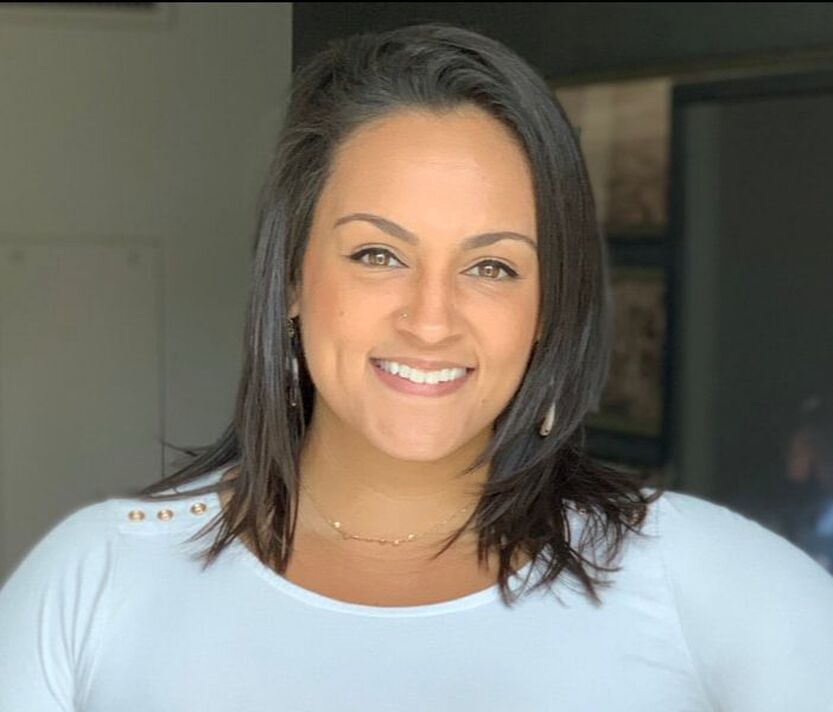


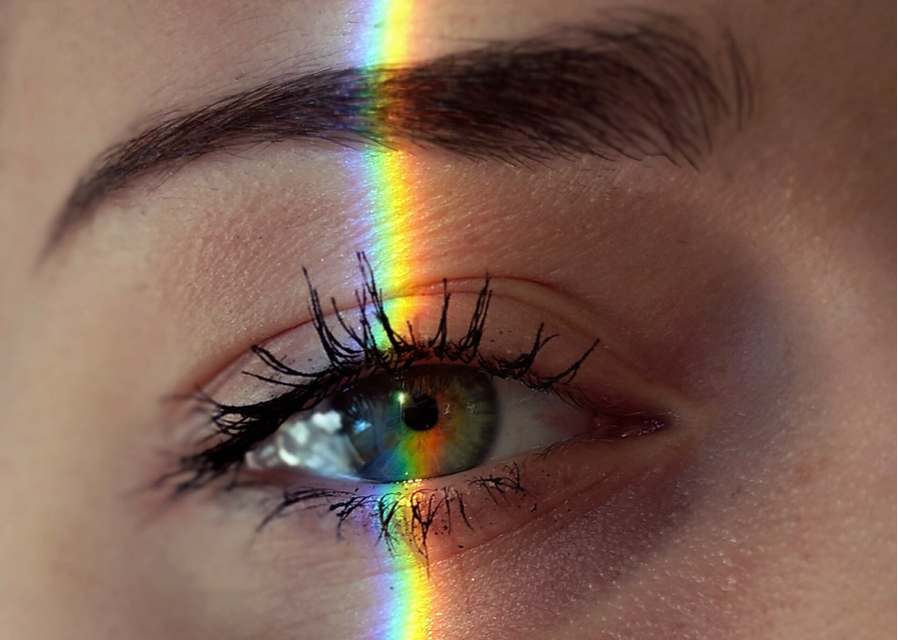
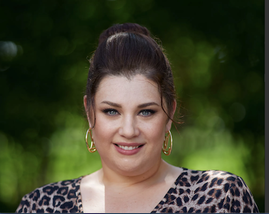
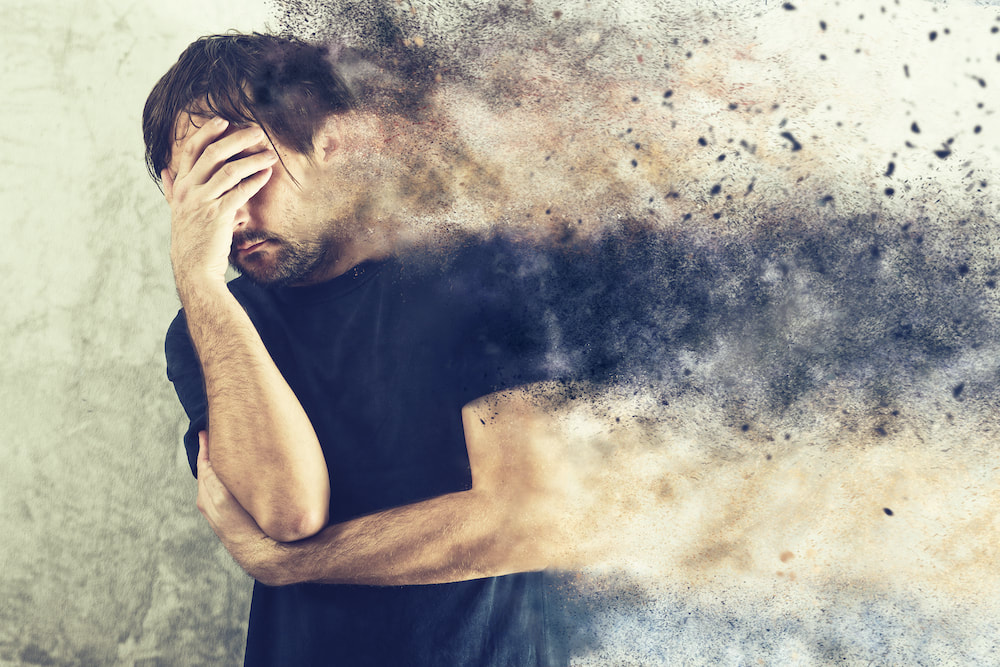
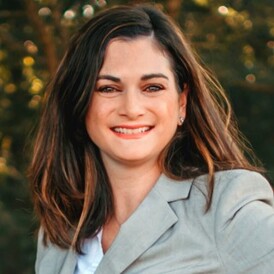
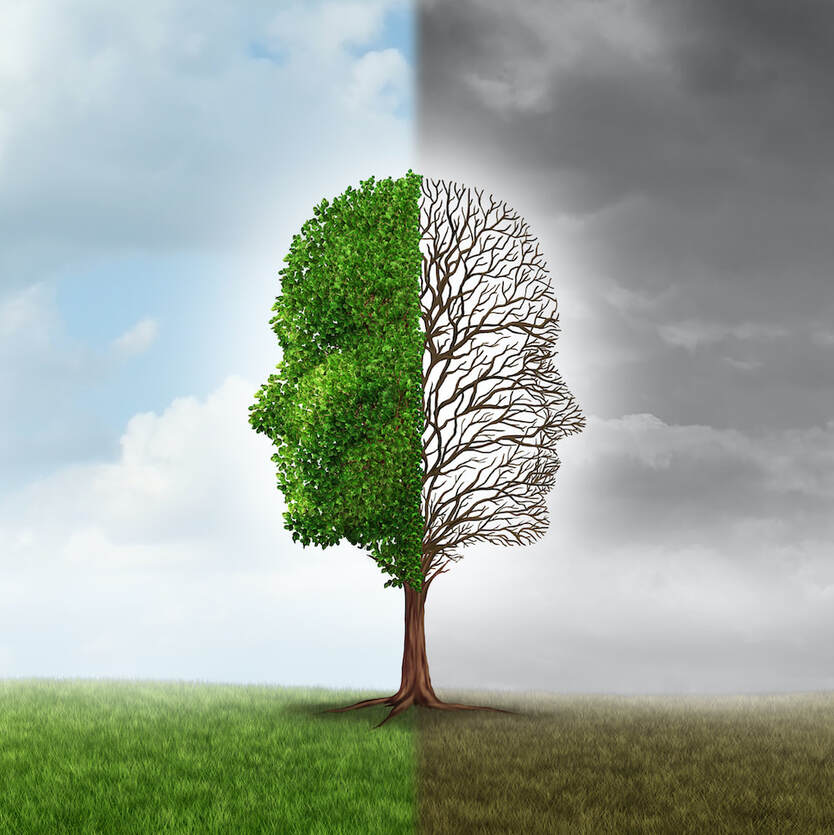

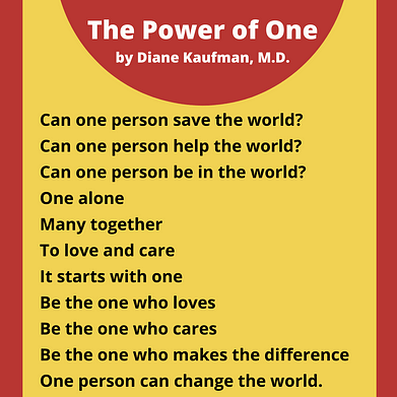
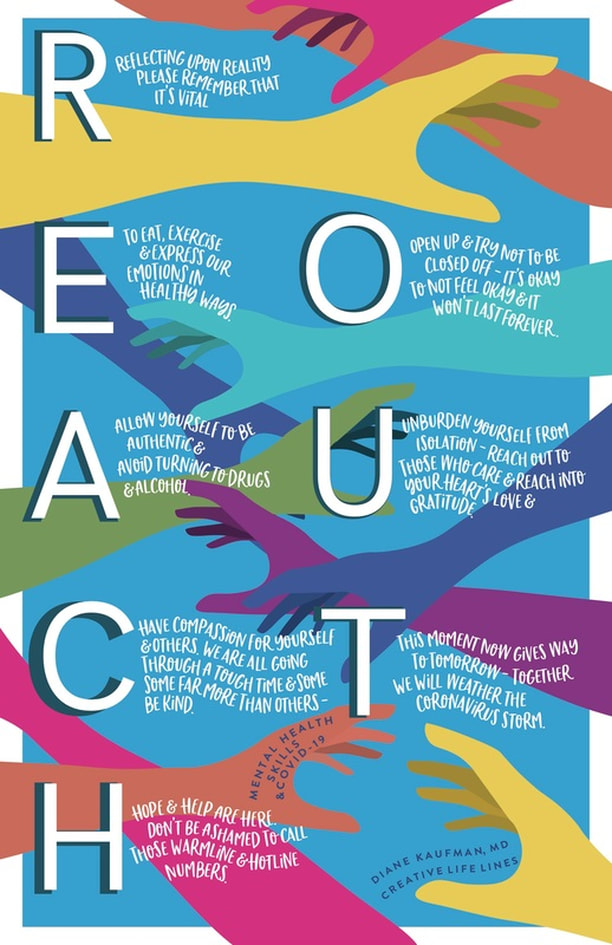

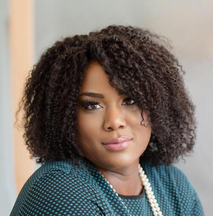
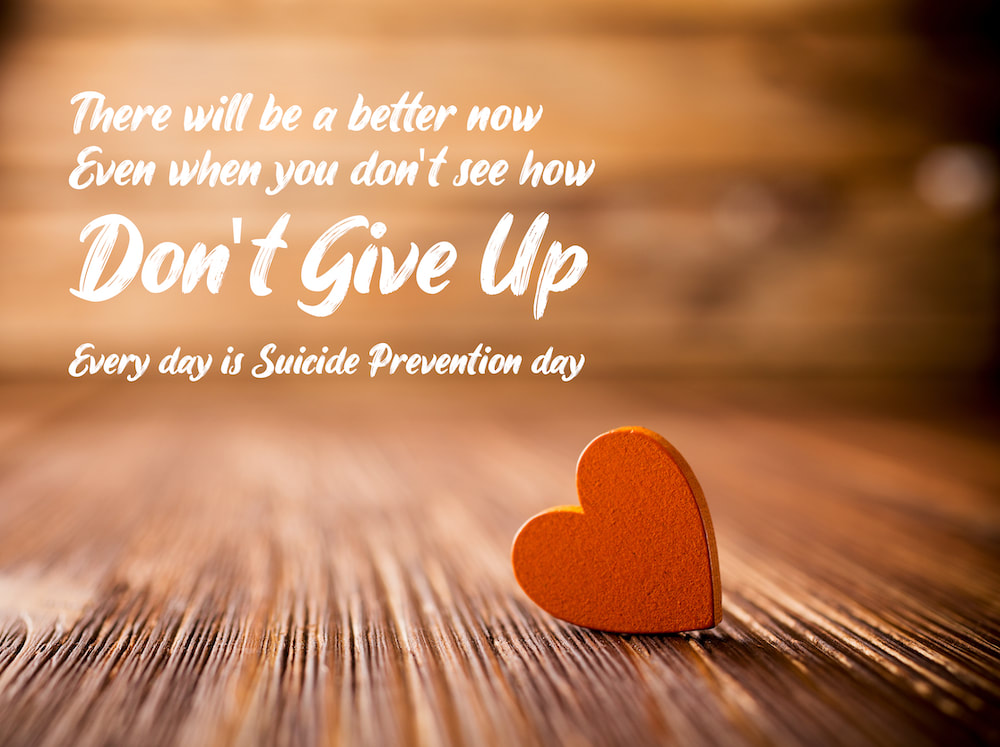
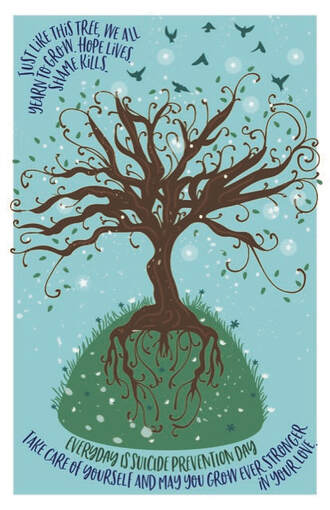
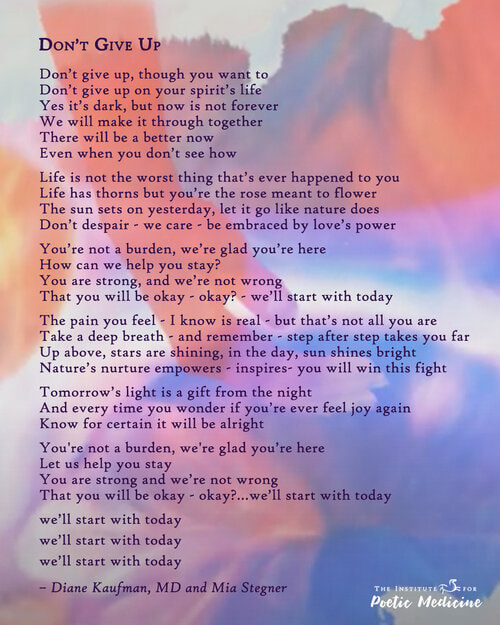
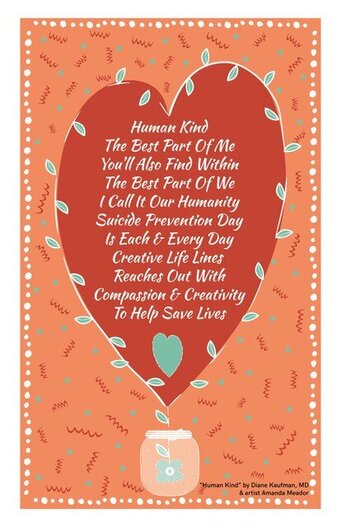
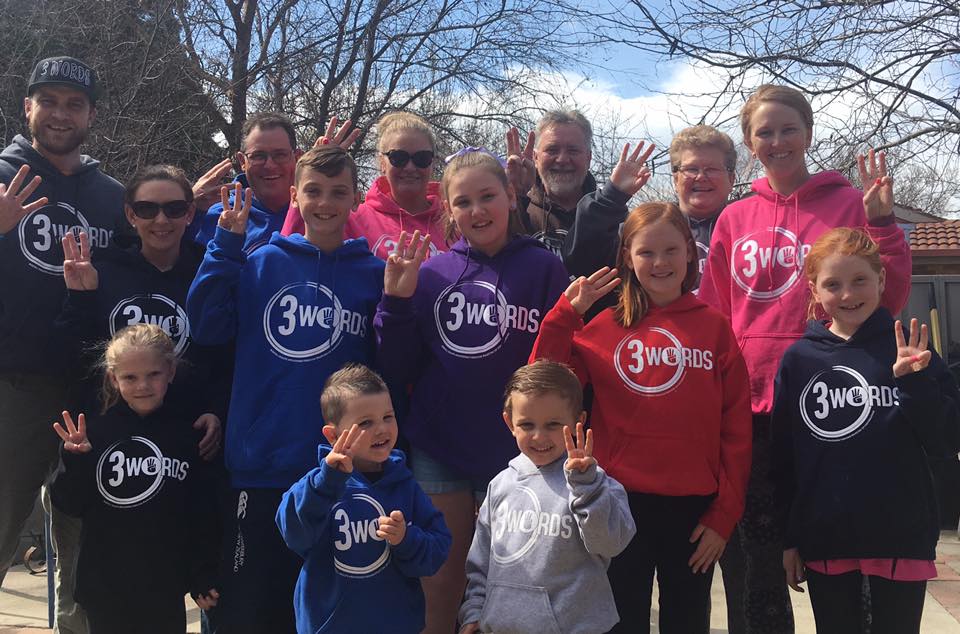
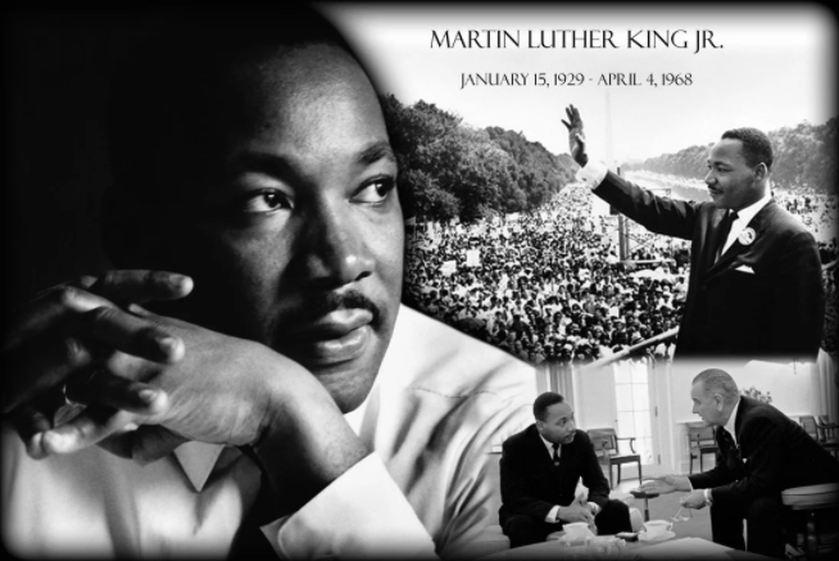
 RSS Feed
RSS Feed